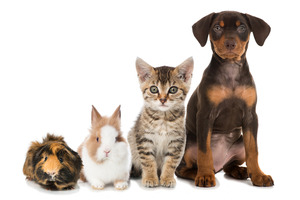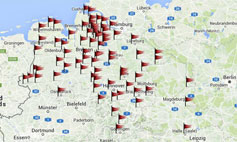Food for Cats, Dogs & Co.
Pet food testing at Institute for Feed Analysis (pet food) at LUFA Nord-West is quickly and safely.
Animals are generally put into two classes, namely livestock and pets; livestock being those animals kept to produce food or work for humans, and pets, which are generally smaller animals, being kept for the pleasure of their owners.
Feed for animals should encompass certain qualities, regardless of the animal's role. Feed should have suitable nutritional value appropriate for an animal's activities and age. However, while pet food should keep the animals healthy for a long life, feed for livestock involves the additional aspect of entering the human food chain.
Pet food generated around €2.594mn turnover in 2008 (cf. table 2). It was sold mainly through general retail channels (67%), with a considerable part being sold through dedicated retail channels (33%). The pet food business is as global as that for livestock feed or Individual pets require feed aligned with their specific physiological requirements. Other variables, such as body mass, temperament, density of coat, sex, race, activities, movement and ambient climate require factoring in when considering feeding. Movement, for example, is an important factor for dogs because the dog's energy requirements can vary enormously. Factors such as race can necessitate consideration of intolerance to substances which might be found in the feed.
Remaining with the dog example: under average conditions, dog food requires max. 26% protein, approx. 36% carbohydrates and 38% fat. Quantitative and qualitative consideration is required for the proteins where digestibility can also be an issue. As with all mammals, the long-term affects of nutrition on health are dependent on the inclusion and balance of other elements (e.g. vitamins, minerals and trace elements).
Cat food also has its special requirements. Feline metabolisms, for example, are unable to produce vitamin A from beta-carotene. Taurine, methionine and arginine are essential. Cats require high levels of nicotinic acid and they generally require higher protein levels than other domesticated animals.
The Institute for Feed Analysis has been testing pet food for years now, evaluating energy content and nutritional values in great detail.
A further field of analysis is centred on the issue of contamination in pet food. LUFA Nord-West is partner of trust for numerous customers in industry and retail, making sure that the high quality of pet food is secured and that its nutritional balance ensures that our pets will continue to live long and healthy lives.
Downloads
 Point of contact
Point of contact

Dr. Egert, Michael
Head of Institute,Feed contents,
Microbiology / Molecular Biology
Jägerstr. 23 - 27
26121 Oldenburg
Germany
Phone: +49 441 801-840
E-Mail: michael.egert~lufa-nord-west.de

Müller, Werner
Laboratory manager feed ingredientsOrder processing
Commercial feeds
Jägerstr. 23 - 27
26121 Oldenburg
Germany
Phone: +49 441 801-850
E-Mail: werner.mueller~lufa-nord-west.de







